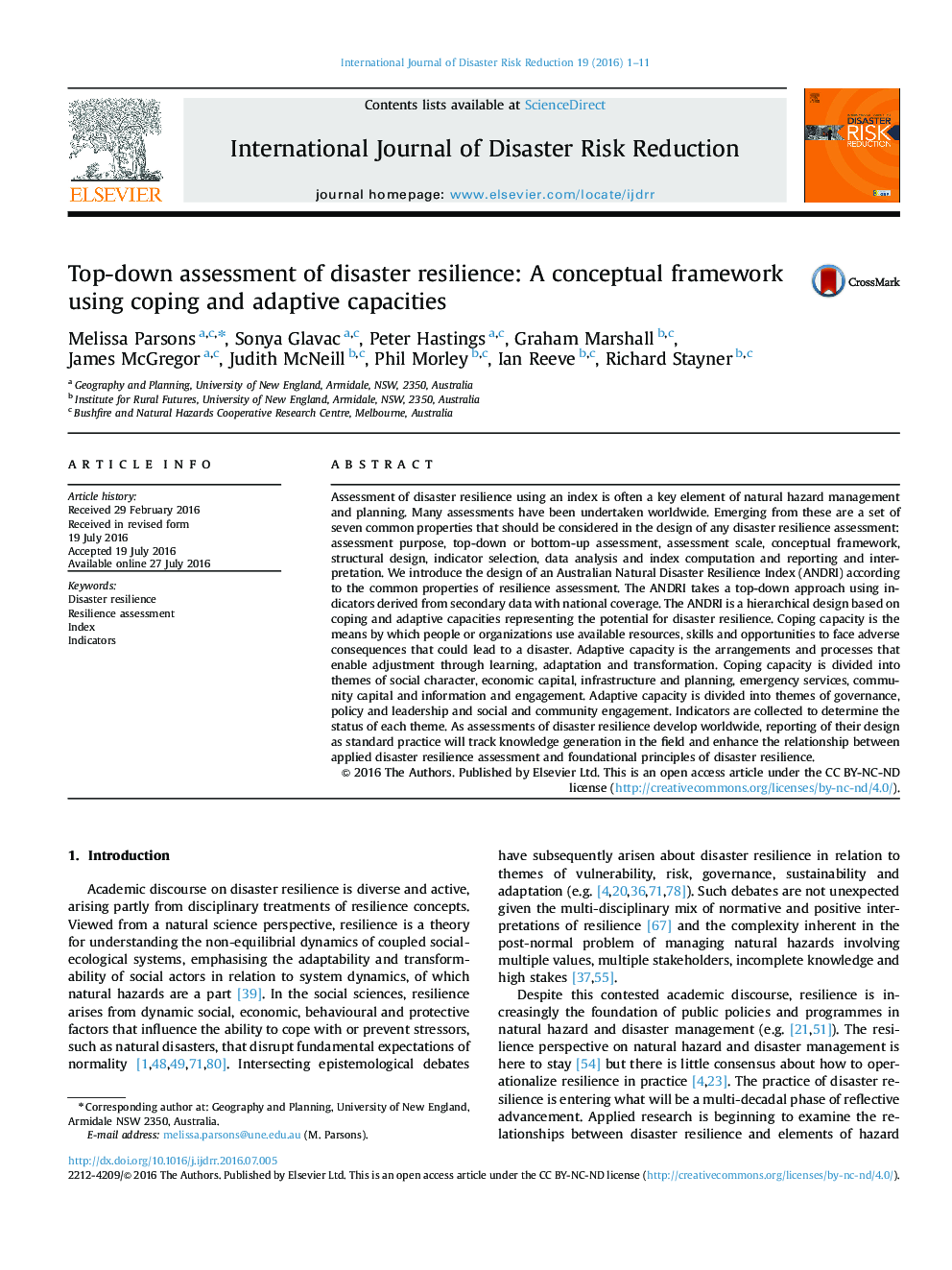| کد مقاله | کد نشریه | سال انتشار | مقاله انگلیسی | نسخه تمام متن |
|---|---|---|---|---|
| 1055199 | 1485151 | 2016 | 11 صفحه PDF | دانلود رایگان |
Assessment of disaster resilience using an index is often a key element of natural hazard management and planning. Many assessments have been undertaken worldwide. Emerging from these are a set of seven common properties that should be considered in the design of any disaster resilience assessment: assessment purpose, top-down or bottom-up assessment, assessment scale, conceptual framework, structural design, indicator selection, data analysis and index computation and reporting and interpretation. We introduce the design of an Australian Natural Disaster Resilience Index (ANDRI) according to the common properties of resilience assessment. The ANDRI takes a top-down approach using indicators derived from secondary data with national coverage. The ANDRI is a hierarchical design based on coping and adaptive capacities representing the potential for disaster resilience. Coping capacity is the means by which people or organizations use available resources, skills and opportunities to face adverse consequences that could lead to a disaster. Adaptive capacity is the arrangements and processes that enable adjustment through learning, adaptation and transformation. Coping capacity is divided into themes of social character, economic capital, infrastructure and planning, emergency services, community capital and information and engagement. Adaptive capacity is divided into themes of governance, policy and leadership and social and community engagement. Indicators are collected to determine the status of each theme. As assessments of disaster resilience develop worldwide, reporting of their design as standard practice will track knowledge generation in the field and enhance the relationship between applied disaster resilience assessment and foundational principles of disaster resilience.
Journal: International Journal of Disaster Risk Reduction - Volume 19, October 2016, Pages 1–11
